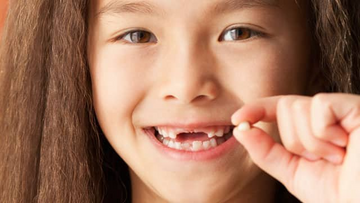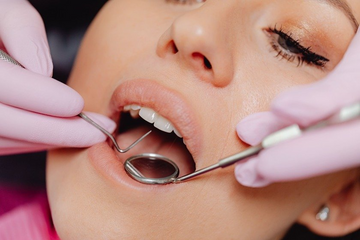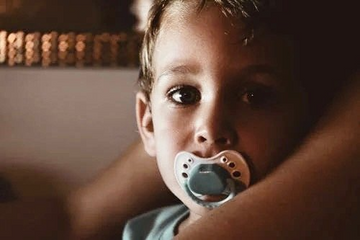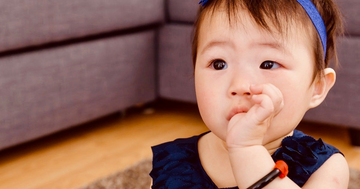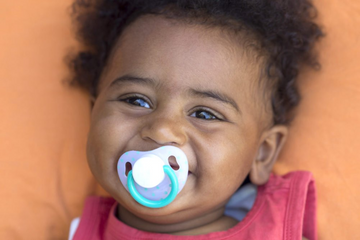Baby teeth are usually very white in appearance, but when children begin the stage of losing baby teeth and have newly erupting permanent teeth (mixed dentition), the color shades are very noticeable. So what’s the deal?
Baby teeth are naturally whiter than permanent teeth. Permanent teeth not only have a thicker enamel, but the layer just under the enamel (dentin) is also more dense. Dentin is yellow in color. This gives the permanent teeth a color slightly more yellow than the baby teeth. And it’s perfectly normal! It can be an adjustment as kids go through the mixed dentition stage and not be as noticeable once all permanent teeth have erupted. It’s also important to understand that society’s vision of “white teeth” has become very skewed over the years. New dental shades have been added to the whitening scale to keep up!

Why are my child’s permanent teeth yellow?
There are a few reasons permanent teeth may come in a different color than their baby, or primary, teeth. The first is simple contrast. Baby teeth are often milky white in appearance, and adult teeth coming in right beside them will look more yellow.
-
DENTIN
A child’s permanent teeth coming in yellow are still healthy teeth. Adult teeth have more dentin, which is the layer beneath the outer enamel. Dentin has a yellowish color. Permanent teeth also usually have enamel that’s more thin than baby teeth, so this yellow color shows through more clearly. Over time, their outer enamel will calcify, and their teeth will appear less yellow. -
GENETICALLY WEAK ENAMEL
Like everything in our bodies, the thickness of our enamel is determined by genetics. If your family is prone to weak enamel, it again will show more of the dentin from beneath. It’s best to contact your preferred pediatric dentist for guidance if you think this is the case. -
PLAQUE BUILDUP
If your child’s permanent teeth are coming in yellow, you might also need to examine their oral health habits. They need to be brushing twice per day for two minutes each time, as well as flossing (if they’re old enough). Not doing so can cause plaque to build up on their teeth, possibly giving the teeth a yellow hue. -
CERTAIN ANTIBIOTICS
It’s rare, but certain antibiotics can cause adult teeth to erupt yellow. Tetracycline, for example, if taken when your child is in utero or if they take it before 8 years old, can cause yellowing of the teeth.
How to Treat Your Child’s Permanent Teeth When They Come in Yellow
The good news is, you don’t really have to do anything to your child’s adult teeth when they erupt with a yellow hue. Due to the naturally thinner enamel and the increased levels of dentin, it’s a perfectly natural experience and not one that requires medical attention. Yellow teeth will resolve on their own, as the enamel calcifies and thickens.
The difference, as we mentioned above, is if you think your child’s thin enamel is genetic. In this case, consult your pediatric dentist to see what can be done. If the yellow color causes your child extreme distress, there are a few steps you can take to try and lighten their teeth.
-
PROPER ORAL HYGIENE
This is key not only for general oral health but can help when your child’s permanent teeth are coming in yellow. Regular, thorough brushing and flossing helps keep plaque at bay, which will help reduce yellow hues. Make sure they don’t brush too hard, as this can damage their thin enamel. -
COSMETIC OPTIONS
You can try a toothpaste with a whitening agent. For extreme cases, there are over-the-counter whitening tools you can use but check with your pediatric dentist first. Lastly, most dentists offer professional whitening services, but your dentist will know best. -
ADJUST THEIR DIET
Keep your child’s diet low in sugary foods and beverages. Avoid carbonated drinks, as well as drinks that can stain teeth like tea or soda. You can also encourage your child to take a sip of water after each meal to rinse whatever drink or meal was being enjoyed.
However, if your child is self conscious about the color of their teeth, there are some things that can be considered. Make sure they are brushing and flossing regularly. Many times an improvement in oral hygiene can improve the color of the teeth. Plaque and tartar build up will cause the teeth to look more yellow than they really are. Also, maintain regular six-month check-ups with your dental office. A dental professional cleaning can safely remove surface stains. For mature teen patients over the counter whitening products can be considered – talk to your dentist before starting a regime with your child.

